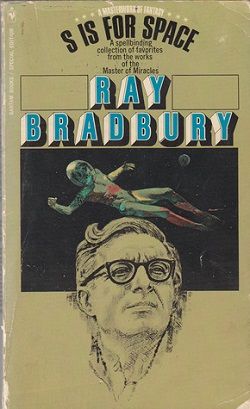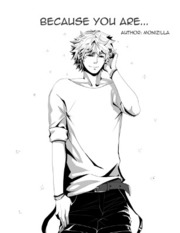Summary

S Is for Space
by Ray Bradbury
S is for science fiction, spine-tingling, supernatural and sublime! S is for stories from a "Star Wilderness that stretched as far as eye and mind could see and imagine".
Chrysalis
Pillar of Fire
Zero Hour
The Man
Time in Thy Flight
The Pedestrian
Hall and Farewell
Invisible Boy
Come into My Cellar
The Million-Year Picnic
The Screaming Woman
The Smile
Dark They Were, and Golden-Eyed
The Trolley
The Flying Machine
Icarus Montgolfier Wright
.
Read
S Is for Space on http://kissnovel.net
Martial Peak Reviews
Ray Bradbury’s S Is for Space is a compelling collection of short stories that showcases the author’s unparalleled ability to weave together elements of science fiction, fantasy, and the supernatural. Published in 1966, this anthology serves as a testament to Bradbury’s imaginative prowess and his deep understanding of the human condition. Each story is a portal into a world where the extraordinary meets the mundane, inviting readers to explore the vast landscapes of the mind and the universe.
The collection opens with “Chrysalis,” a story that encapsulates the theme of transformation, both literal and metaphorical. Here, Bradbury introduces us to characters who are on the brink of change, mirroring the metamorphosis of a caterpillar into a butterfly. This theme of change resonates throughout the anthology, as many characters grapple with their identities and the forces that shape them. Bradbury’s use of vivid imagery and lyrical prose creates a sense of wonder that permeates the entire collection.
In “Pillar of Fire,” we encounter a more somber reflection on mortality and the passage of time. The story’s protagonist is faced with the inevitable decay of life, prompting readers to confront their own fears and desires. Bradbury’s exploration of existential themes is both poignant and thought-provoking, reminding us that life is fleeting and that we must cherish our moments. This story, like many others in the collection, showcases Bradbury’s ability to blend the fantastical with the deeply personal, creating a rich tapestry of human experience.
“Zero Hour” is another standout story that delves into the theme of childhood innocence juxtaposed with the darker aspects of human nature. In this tale, children engage in a game that takes a sinister turn, highlighting the fragility of innocence and the potential for evil that exists within us all. Bradbury’s keen observation of human behavior is evident here, as he captures the complexities of childhood imagination and the underlying fears that accompany it. The chilling conclusion leaves a lasting impact, forcing readers to reconsider the nature of play and its implications.
Character development is a hallmark of Bradbury’s storytelling, and this collection is no exception. In “The Pedestrian,” we meet Leonard Mead, a man who finds solace in walking the empty streets of a dystopian future where technology has rendered human interaction obsolete. Mead’s character embodies the struggle against conformity and the yearning for connection in an increasingly isolated world. Bradbury’s portrayal of Mead’s quiet rebellion serves as a powerful commentary on the dangers of technological advancement and the loss of individuality.
“The Million-Year Picnic” offers a fascinating exploration of escapism and the desire to create a new world. In this story, a family embarks on a journey to Mars, seeking refuge from the chaos of Earth. Bradbury’s depiction of Mars as a blank canvas for human imagination is both hopeful and cautionary. The story raises questions about the nature of civilization and the responsibilities that come with creation. As the family grapples with their past and the future they wish to build, readers are left to ponder the implications of their choices.
Throughout the anthology, Bradbury’s prose is characterized by its poetic quality and rich symbolism. Stories like “Dark They Were, and Golden-Eyed” and “The Flying Machine” showcase his ability to evoke emotion through vivid imagery and metaphor. In “Dark They Were, and Golden-Eyed,” the transformation of humans into Martians serves as a powerful allegory for the loss of identity and the impact of colonization. Similarly, “The Flying Machine” explores the tension between innovation and the consequences of human ambition, illustrating Bradbury’s deep understanding of the complexities of progress.
The collection’s thematic richness is complemented by its diverse range of characters, each grappling with their own struggles and desires. From the innocent children in “Invisible Boy” to the introspective protagonist in “The Smile,” Bradbury crafts characters that resonate with readers on a personal level. Their journeys reflect universal themes of love, loss, and the search for meaning, making the stories relatable and impactful.
In comparison to other works of science fiction, S Is for Space stands out for its lyrical quality and emotional depth. While authors like Isaac Asimov and Arthur C. Clarke often focus on technological advancements and their implications, Bradbury’s stories delve into the human experience, exploring the emotional and psychological landscapes that accompany such changes. His ability to blend the fantastical with the deeply personal sets him apart as a master storyteller.
Overall, S Is for Space is a remarkable collection that showcases Ray Bradbury’s genius as a writer. His exploration of themes such as transformation, mortality, and the complexities of human nature resonates deeply with readers, inviting them to reflect on their own lives and experiences. The anthology’s rich imagery, compelling characters, and thought-provoking narratives make it a timeless work that continues to captivate audiences. Whether you are a long-time fan of Bradbury or a newcomer to his work, this collection is a must-read for anyone seeking to explore the boundaries of imagination and the depths of the human spirit.
























Reviews 0
Post a Reviews: